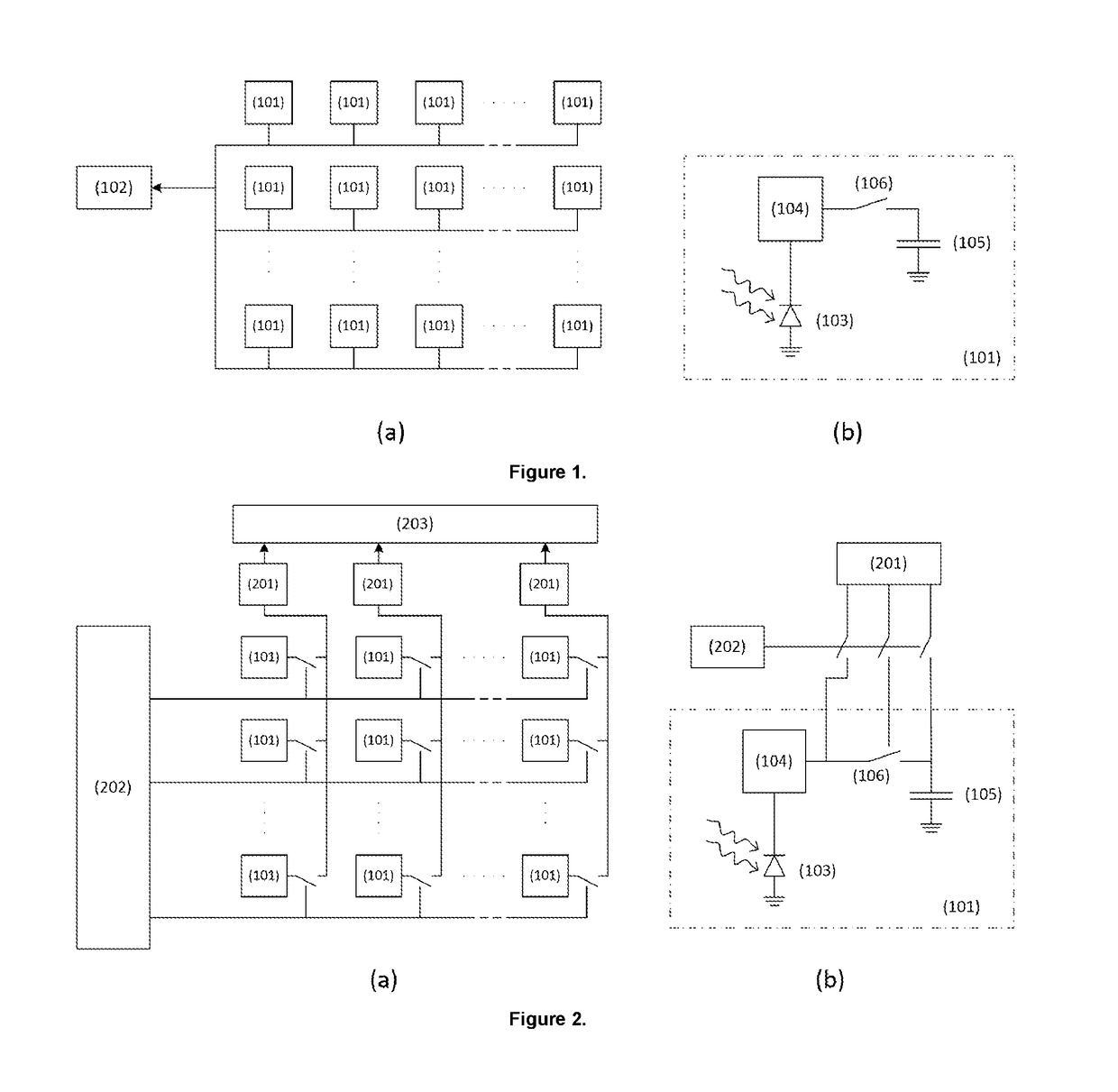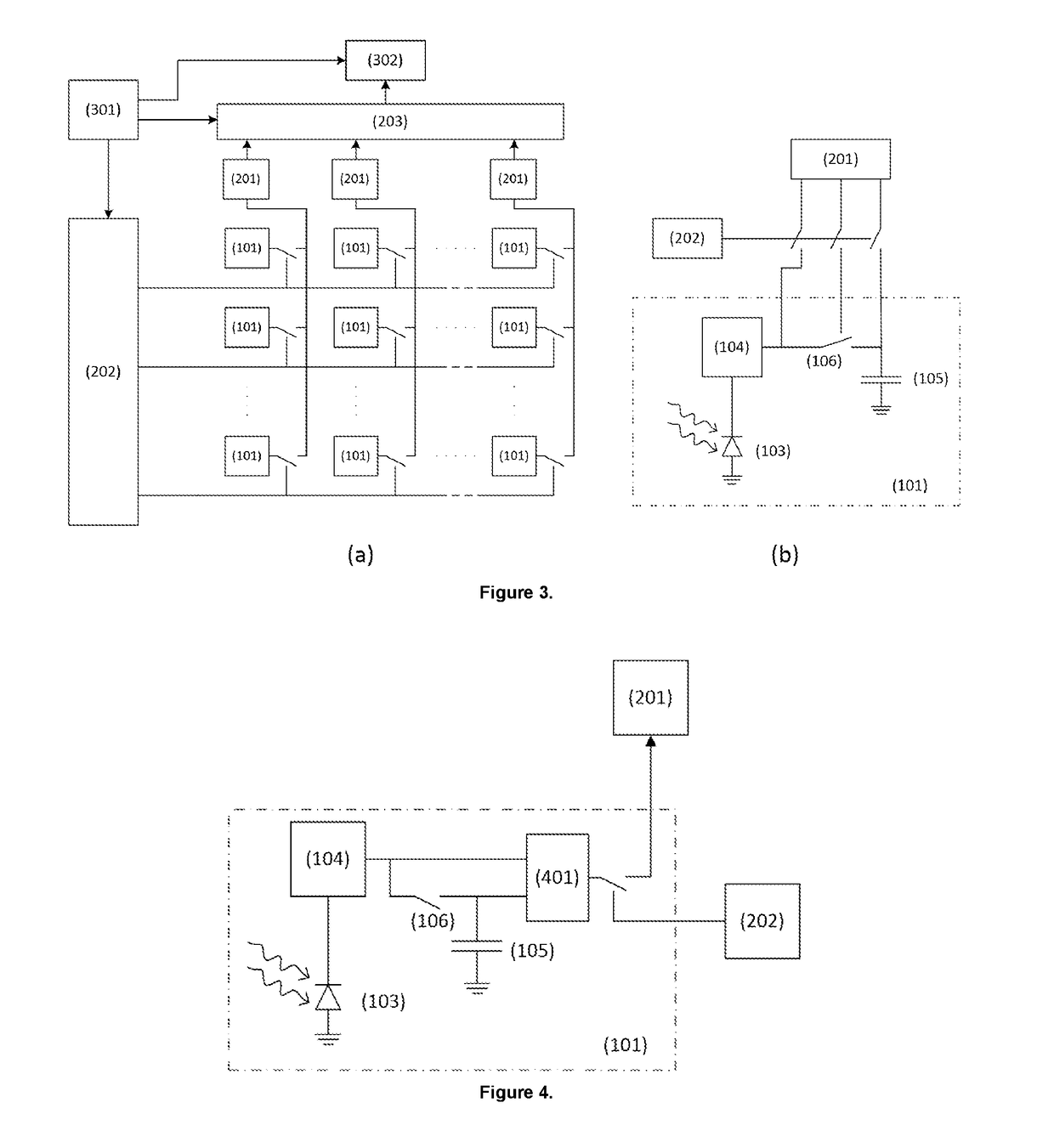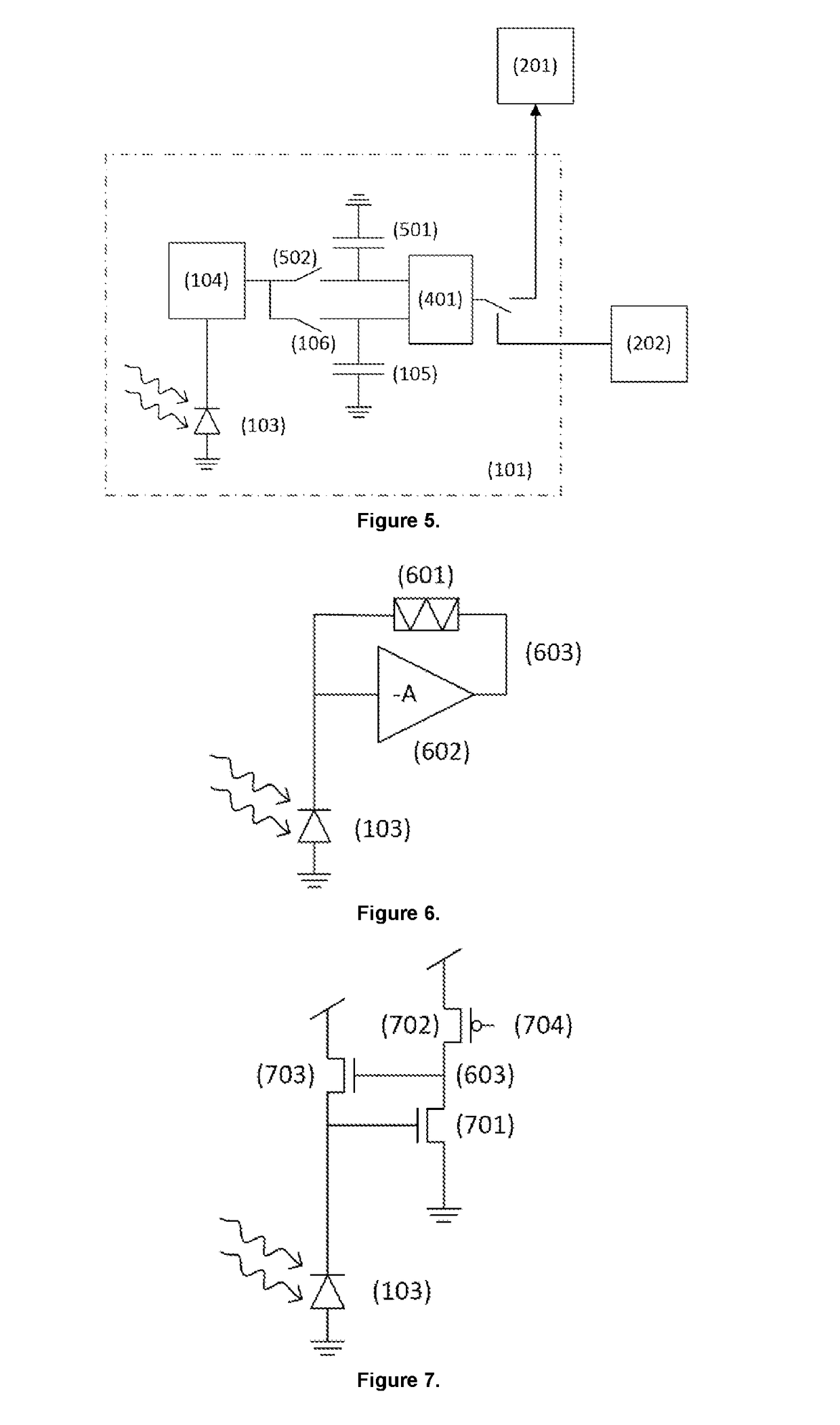An Event-Based Vision Sensor
a technology of event-based vision and sensor, which is applied in the field of vision sensors, can solve the problems of high throughput of data motion blur, and high redundancy of sensor output data, and achieve the effects of low temporal resolution, high power consumption, and high redundancy of output data
- Summary
- Abstract
- Description
- Claims
- Application Information
AI Technical Summary
Benefits of technology
Problems solved by technology
Method used
Image
Examples
example equations
for Logarithmic Photoreceptor:
[0201]As an example for better understanding, for the following equations it is assumed that the sensor stores a quantity that is proportional to the logarithm of the light intensity, because this is the preferred implementation.
[0202]A voltage encoding the light intensity is read at discretized times:
Vpr(tn)=k1+k2* log (Int(tn)), (11)
[0203]where k1 and k2 are constants. To decide if an event has happened, we compute the difference between Vpr(tn) and Vpr at the time of the last event t1:
Vdiff(tn)=A(Vpr(tn)-Vpr(tl))=A*k2(log(Int(tn))-log(Int(tl))(12)Vdiff(tn)=A*k2*logInt(tn)Int(tl)(13)
[0204]We see that for a logarithmic intensity encoding, the sensor reacts to relative changes in the intensity, which is useful because it means the sensor reacts to scene reflectance changes independent of the illumination level which is the reason for being the preferred embodiment. From Erreur ! Source du renvoi introuvable., we see that
Vdiff(tn)=A∫tltnf′(Int(t))*dInt...
PUM
 Login to View More
Login to View More Abstract
Description
Claims
Application Information
 Login to View More
Login to View More - R&D
- Intellectual Property
- Life Sciences
- Materials
- Tech Scout
- Unparalleled Data Quality
- Higher Quality Content
- 60% Fewer Hallucinations
Browse by: Latest US Patents, China's latest patents, Technical Efficacy Thesaurus, Application Domain, Technology Topic, Popular Technical Reports.
© 2025 PatSnap. All rights reserved.Legal|Privacy policy|Modern Slavery Act Transparency Statement|Sitemap|About US| Contact US: help@patsnap.com



